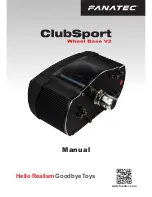
APAA00001
User Manual
4 System Maintenance
Draft A (2015-06-12)
Huawei Proprietary and Confidential
Copyright © Huawei Technologies Co., Ltd.
16
4.1.2 PAA Shell
The PAA shell is made of PC+ABS materials, and is vulnerable to scratches or breakage.
The battery must be kept away from violent collision when it is transported, carried, and
stored.
The PAA must not be used outdoors during a thunderstorm.
If the PAA is to be used at a high position, it is recommended that the PAA be fastened
using a strap or protected with a bag to minimize the possibility that the PAA falls to the
ground.
After the PAA is used, the USB and AISG connection ports need to be protected using
dedicated protective caps so that foreign matters cannot enter the PAA.
4.1.3 Silicone Shell
The protective shell of the PAA is made of silicone materials and is vulnerable to scratches or
breakage.
The silicone shell cannot be in contact with keen-edge objects.
The silicone shell must not be frequently removed or violently stretched. Otherwise, the
shell may be deformed.
It is recommended that the silicone shell be cleaned using wet cloth or a toothbrush with
toothpaste or alcohol and then washed using clean water. Do not soak the silicone shell
into water for a long time, violently brush the shell, or dry the shell at high temperature
using a hair dryer.
The silicone shell may easily be covered with dust, grease stain, or other foreign matters
due to electrostatic attraction. Therefore, it is recommended that the PAA be placed in a
paper case at a cool and dry environment if it is not used for a long time.
4.2 Alarm Handling
When the PAA app is used to control the PAA, PAA alarms can be queried using the app. For
details about alarm codes, see section A.2"Alarm Codes."
4.2.1 Hardware Fault Alarm Handling
Background
A hardware fault alarm is reported when the flash memory or I
2
C bus inside the PAA is faulty.
Table 4-1 describes the hardware fault alarm.










































